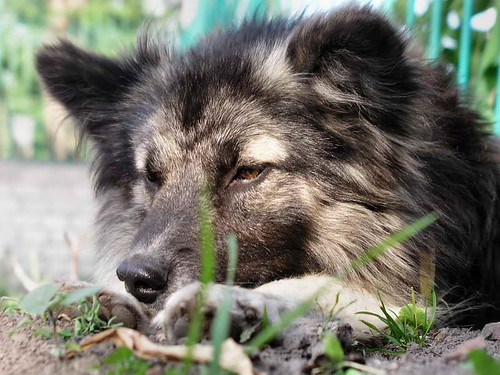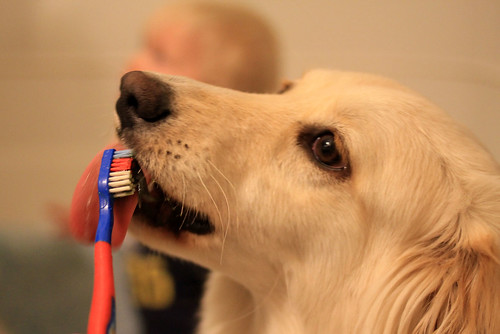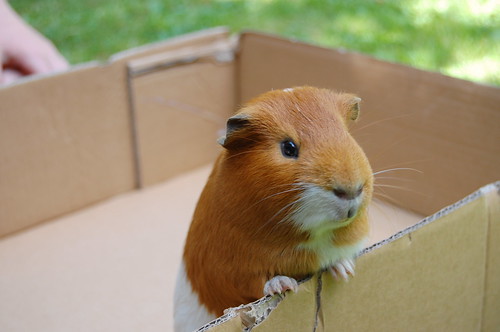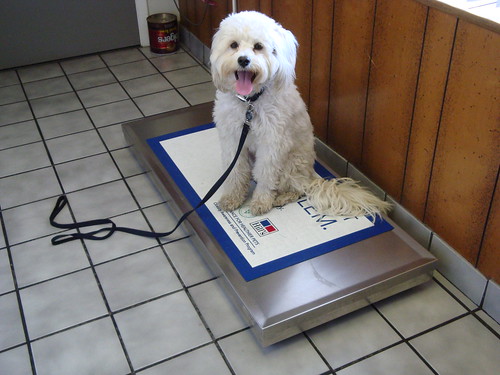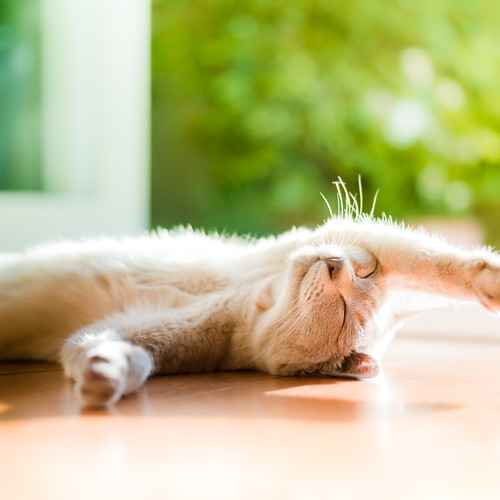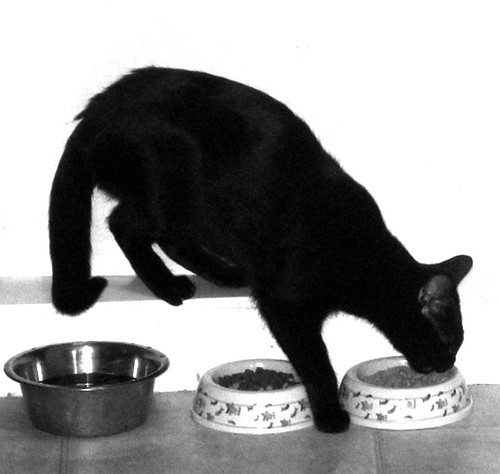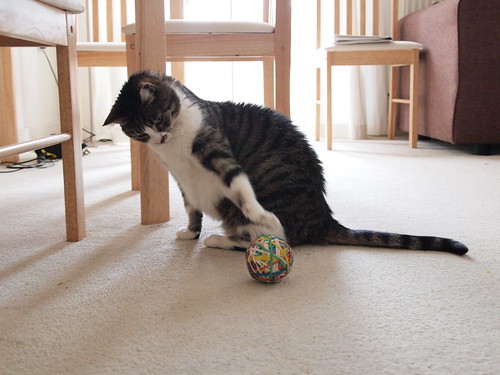Introduction
If you are familiar with large breed dogs, you probably heard about their predisposition for hip dysplasia. Although this is common in larger dogs especially, Degenerative Myelopathy (DM) is another disorder that affects mobility and quality of life in these breeds. In early reports, most dogs affected with DM were German Shepherds, but many breeds can also be affected by DM.
DM is also known as Chronic Degenerative Radiculomylopathy. We do not understand the disease completely, but we know in part that it is a genetic disease, so it can be passed down to future generations. DNA mutation in a gene called superoxide dismutase 1 (SOD1) has been discovered as the underlying defect. Before the gene mutation was discovered, nutritional and immune factors were also suggested as possible causes of DM. The mutation causes a defect in muscle energy production (by the cell mitochondria), leading to premature cell death (apoptosis). The gross changes seen in the dog is the end result of this cellular death.
Some breeds may have variants where other genes are affected or involved, and the disease does still appear to be multifactorial, in that environmental factors or other genes are likely involved in the disease onset and progression.
What is DM?
DM is a progressive and debilitating neurologic disease that affects the spinal cord. It is characterized by loss of function to the hind legs leading to weakness and incoordination, with eventual paralysis. Some dogs will lose control of their bladder and bowel movements as the disease progresses. The rate of progression of the disease is different for every dog. Most affected dogs are eventually euthanized due to the disability between 6-12 months from diagnosis.
The disease can occur in any aged dog, but is most common in older dogs. The spinal cord degeneration occurs slowly, and initially may appear similar to symptoms associated with hip dysplasia and arthritis. One of the first signs noticed is difficulty standing up on the hind legs. Uncoordinated movement is also seen, often exacerbated when the dog walks on smooth, slippery surfaces. As the disease progresses, the dog becomes even more uncoordinated and will scuff or drag the rear paws, causing excessive wearing of the nails. The rear legs may also crisscross when the dog stands and/or walks. Muscles of the hind legs will eventually waste away leading to further difficulties. Sometimes one leg is more noticeably uncoordinated than the other, and the disease can wax and wane episodically, or just progress steadily. It usually takes several months to a year after onset of signs for a dog to become unable to walk. Unfortunately, as the disease progresses, the front legs may also become weak.
Diagnosis
A veterinarian who suspects DM will perform a series of orthopedic and neurologic tests during the examination. One test is called conscious proprioception (CP). CP is the awareness for the placement of one’s legs. Loss of CP ability to the hind legs is a classic sign for loss of neurologic function and is ONE classic sign of DM. Severe arthritis can also mimic this sign, so a veterinarian should perform the examination. DM to some degree is a diagnosis of exclusion. A veterinarian must rule out other causes of limping and weakness such as hip dysplasia and arthritis, ligament injury at the knee, nerve compression (intervertebral disc disease, lumbosacral stenosis/cauda equine syndrome, etc), as well as tumors/cancers that can also affect the spinal cord. Sometimes, the only way to determine the underlying cause is to have an MRI or other imaging procedure performed. X-rays can be used to rule out obvious bony tumors of the spinal column and displacement or fractures of the vertebral column, but will unfortunately often miss spinal cord tumors and clots that can affect blood flow to the spinal cord. MRI can rule out concurrent diseases that may actually be treatable, such as spinal cord compression from intervertebral disc disease.
Unfortunately, definitive diagnosis of DM can only be made after death by looking at biopsies from the spinal cord.
DNA testing for the mutation is possible through the Orthopedic Foundation for Animals (OFA). The test may be performed on any breed dog but is most validated for certain breeds, including German Shepherds. The test identifies dogs that do not have the mutation, carriers that have one normal copy and one mutated copy of the gene, and dogs with 2 mutated copies making them at higher risk for developing DM. It is important to note that there are studies that include dogs with 2 mutated copies and no clinical signs, but it is unclear if they will develop DM as they age. Also, early studies revealed disease only in dogs carrying 2 abnormal copies of the gene, with carriers not showing clinical signs but this does not seem to be true as a generalization. This is why the disease is likely multifactorial and may involve other genes depending on the specific dog.
Treatment and Management
Unfortunately, no treatment has been shown to reverse the signs or treat the disease. Supportive treatment can help, and dogs with DM can be managed with appropriate care until the disease progresses to the point when there is significant debilitation. Exercises such as walking and swimming should be encouraged and do help by promoting the maintenance of muscle mass. Seeking the help of a veterinary physical therapist can have a profound effect on the quality of life of the dog. A combination of range of motion exercises, strength building exercises such as water therapy, and massage can have profound effects on the mobility of patients with DM. Acupuncture and electroacupunture have also been used with varying success. In one study of dogs with DM, dogs that received intensive physical therapy had longer survival times compared with dogs that received moderate physical therapy. Dogs receiving no physical therapy survived about 25% as long as the group receiving intensive physical therapy. Studies to date that have evaluated other treatments (including use of steroids and supplements/vitamins) along with exercise have failed to show benefit over intensive physical therapy and exercise alone. It is important to note that vitamins and supplements often are very expensive and can affect the ability to provide physical therapy if finances are limited. Some medications and supplements used include antioxidants such as N-acetylcysteine, SAMe, Coenzyme Q10, SOD (superoxide dismutase), vitamins E and C, and selenium, along with vitamin B, L-carnitine, fish oils and steroids. More studies are needed to see which of these can be helpful and at what doses.
It is also important to note that arthritis from a number of underlying conditions is very common in dogs with DM due to their advanced age and breed, so a number of these supplements and medications can provide relief and improved quality of life irrespective of the changes associated with DM.
Can DM be prevented?
Responsible breeding can be used to help prevent the progression of DM. Dogs that are predisposed to DM that are planned for breeding could be tested prior to breeding and the results could be used with other determinants to figure out which dogs should be left out of the breeding program and which dogs should be used on a more limited basis. For example, a carrier dog showing exceptional qualities in other characteristics for the breed can be mated with an equally impressive dog that is negative for both copies of the gene. It is important to note that other factors are involved and there are reports of dogs that are not carrying both abnormal copies of the gene showing signs of DM and those with both abnormal copies showing no signs of DM. A breeding program should involve many factors, but testing can potentially help decrease the prevalence of DM. If you plan to get a purebred puppy of an affected breed, you should ask the breeder about the history of DM in the puppy’s lineage and ask if testing for DM has been performed. It is very important to understand that clinical signs do not develop until long after sexual maturity.
Quality of Life:
Once the dog reaches the non-ambulatory state, pressure sores, urine leaking/scalding, and loss of bowel control are likely to develop rapidly. Dogs at this state must be kept clean and dry and have access to clean bedding. Close attention should be made to daily eliminations. Quality of life is often greatly diminished at this point, even if carts are used for ambulation. The difficulty in providing care to these dogs must be taken into account as well when deciding on end-of-life decision making. If the appropriate care is not feasible, it is often in the best interest of the dog to consider humane euthanasia, or at the least starting up conversation with a veterinarian about humane euthanasia and quality of life.
Long before the non-ambulatory state is reached, quality of life is often of concern for the dog (as well as for the owner). Determining quality of life is often difficult with DM. Since the disease progresses slowly, it’s often difficult to assess the daily declines seen with DM. Additionally, the disease process is not painful, although many of these dogs suffer from hip, knee and/or spinal arthritis and loss of muscle along with potential trauma from falling can exacerbate these painful conditions. Often writing notes daily and reviewing them weekly will help. Notes should include information on the dog’s ability to ambulate, any falls or significant changes in mobility that are seen, other quality of life changes such as poor appetite and lack of interest in routine activities. Pain from other conditions such as arthritis and hip dysplasia should also be taken into account and documented. It is very important to consider the ability of the household to provide adequate care to dogs affected by DM- in some households there is always someone home to provide care and in some households finances are not significantly limiting. This is not true for your average household. There is often guilt felt by owners of dogs with DM. There should be no guilt, as we can only provide care up to our available resources (time, finances, etc). Our finances and daily responsibilities often hold us back from doing what we would like, but this should not raise feelings of guilt. With all the difficulties in caring for dogs with DM, we must stay focused on the things we can control and focus on quality of life that the individual family can provide to their dog. Speaking with your veterinarian can be helpful in determining quality of life and to aid in providing for the best care possible for your dog.
Lap of Love provides a quality of life tool that can be quite helpful and can be used over time to decide what is best for your pet. Please follow this link to connect to the hospice journal and quality of life scale:
http://www.pethospicejournal.com.
Written by Brad Bates, DVM
 Read more or contact Dr. Bates:
Read more or contact Dr. Bates:
Brad Bates, DVM DABVP
Lap of Love Veterinary Hospice
Philadelphia, PA
drbrad@lapoflove.com |
www.lapoflove.com
(267) 317-8110
Dr. Bates services the Greater Philadelphia area with providing families
with in home hospice and euthanasia options. (All areas around Philly
including Rittenhouse, Center City, Art Museum, Queen village,
Washington Square, Graduate Hospital, Society Hill, Italian Market,
Logan Square, Bella Vista, Old City, West Philadelphia, South
Philadelphia, University City, Fishtown, Northern liberties, Fairmount,
Manayunk, Conshohocken, Roxborough, Drexel Hill, Media, Villanova,
Swarthmore, New Hope, Langhorne, Bryn Mawr, and Gladwyne).
